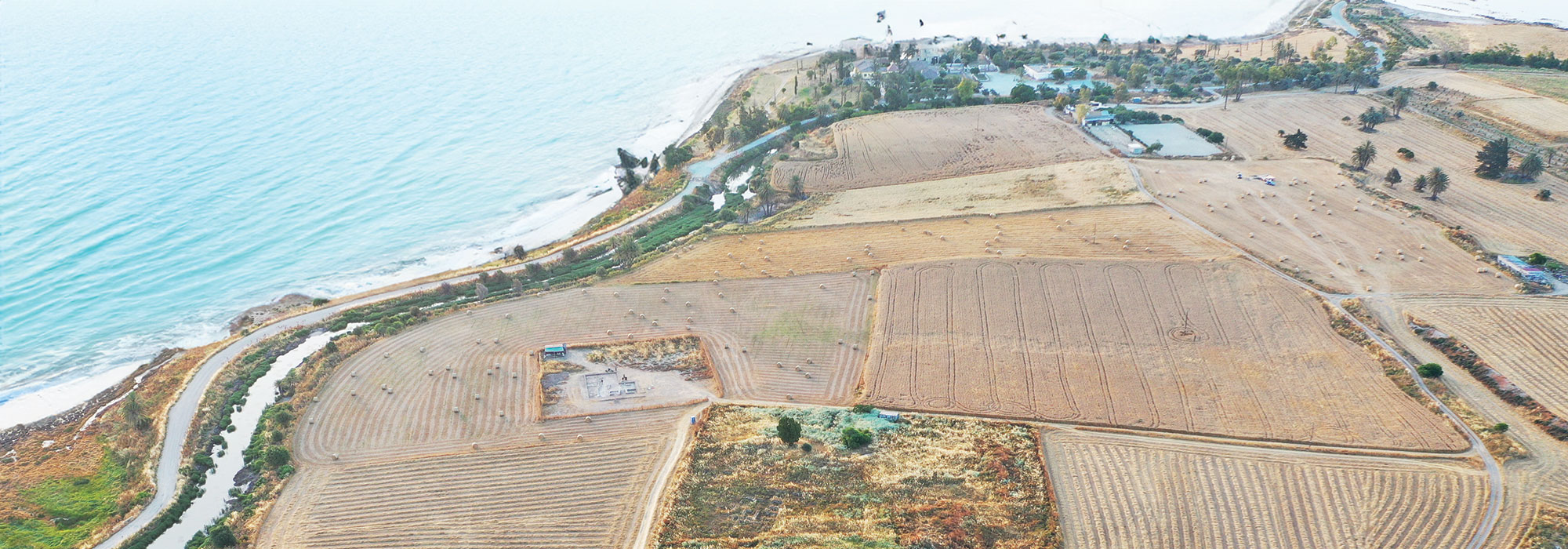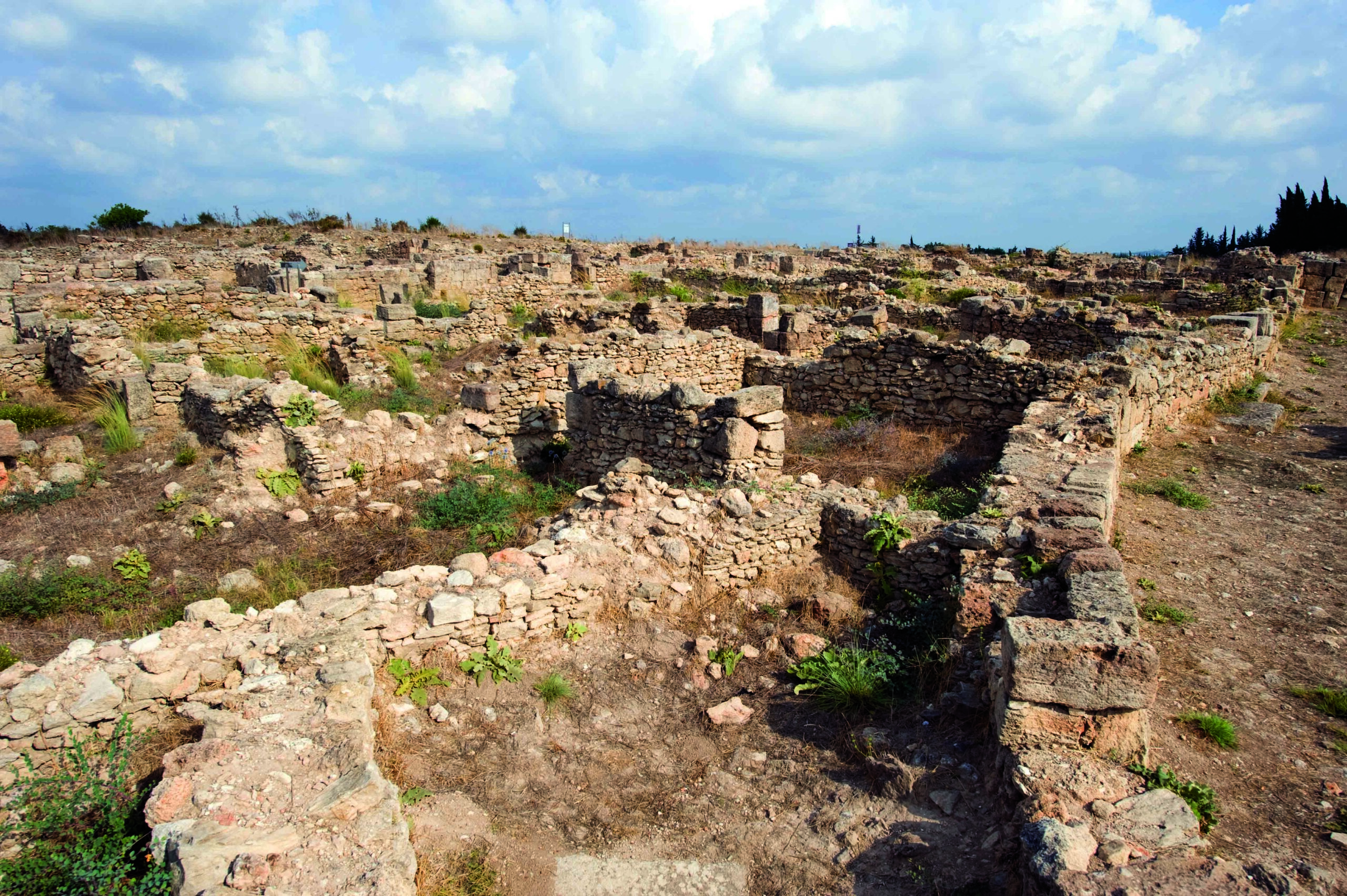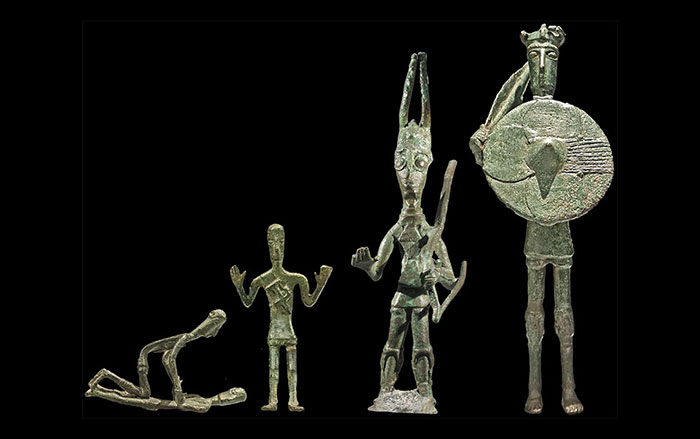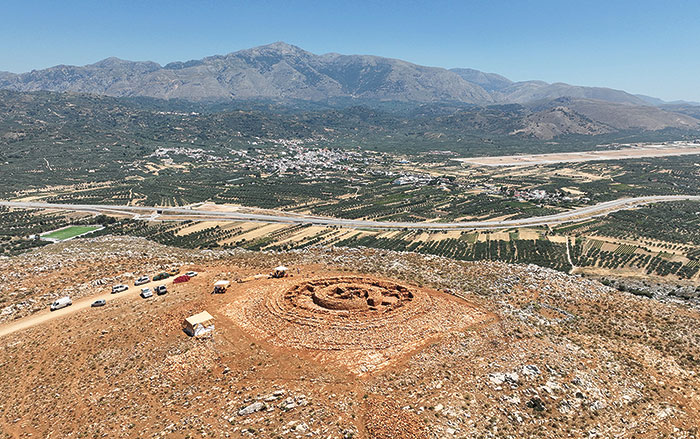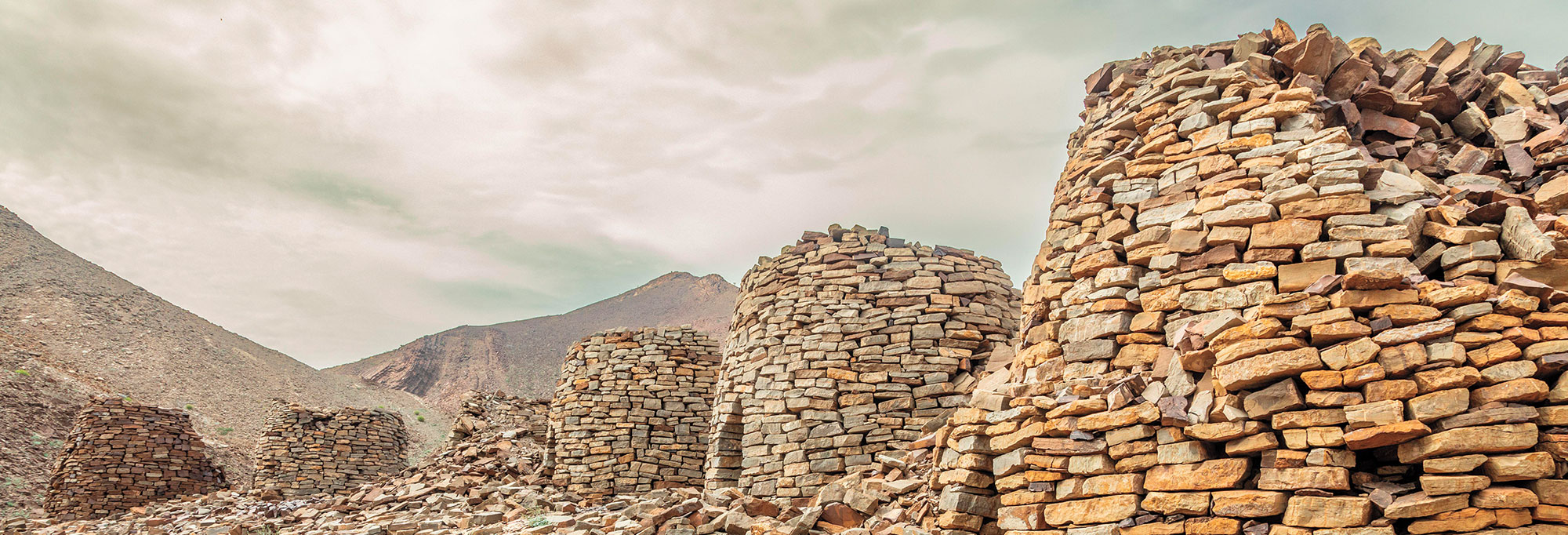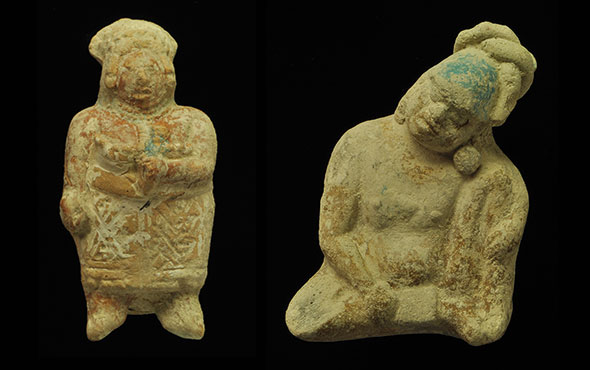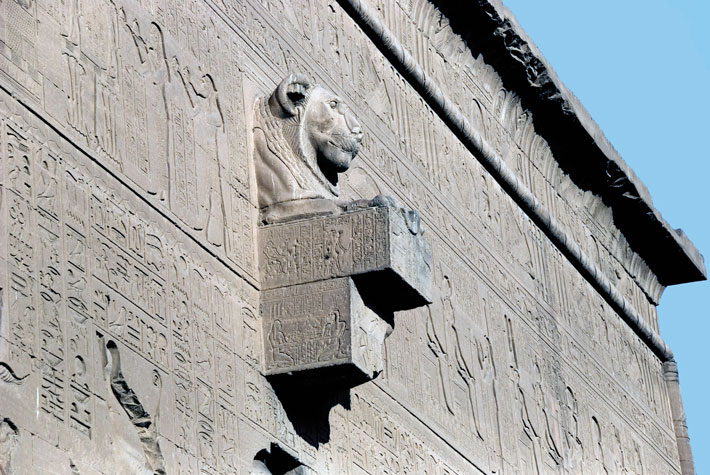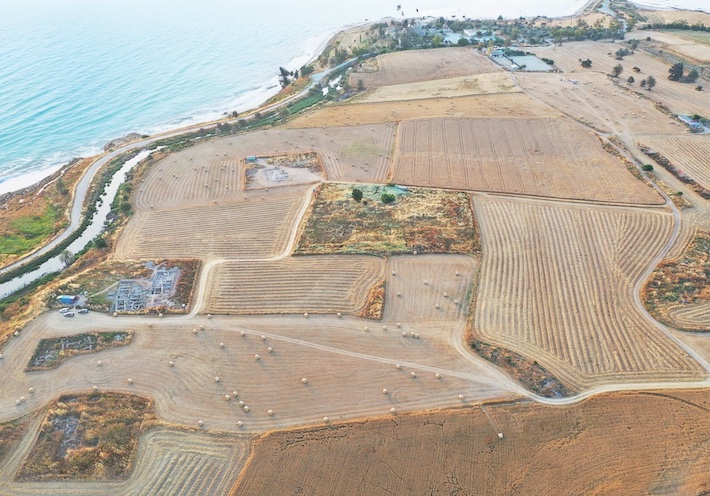
More than 40 years ago, a Turkish sponge diver named Mehmet Çakir caused a stir among Anatolian archaeologists when he showed them sketches of objects that he had seen lying 150 feet deep on the seafloor off the coast of Kas, in southwestern Turkey. He described them as “metal biscuits with ears,” but experts immediately recognized them as a type of metal bar known as an oxhide ingot that was commonly traded during the Bronze Age, 3,500 years ago.
Authorities immediately began to search for the site, and soon came across the artifacts that Çakir had spotted not far offshore of Uluburun, or the Grand Cape. In addition to the ingots, there were so many other ancient objects scattered about that archaeologists and divers would spend a decade returning to the site. It would take them more than 22,000 separate dives to retrieve all the artifacts from what is one of the world’s oldest and most spectacular shipwrecks.
In many ways, the Uluburun wreck represents a microcosm of the Late Bronze Age (ca. 1650–1150 B.C.) world from which it came. This was a time when mariners and merchants crisscrossed the sea on journeys spanning hundreds, even thousands, of miles. In all, about 18,000 objects have been found at the Uluburun wreck, and together they weigh more than 17 tons. Among them are elephant tusks, hippopotamus teeth, faience and glass beads, and gold and silver jewelry, as well as weapons and musical instruments. There are artifacts belonging to seven different cultures, including Egyptian, Nubian, Assyrian, and Mycenaean. “The Late Bronze Age is the first international period of the Mediterranean Sea,” says University of Gothenburg archaeologist Peter Fischer.
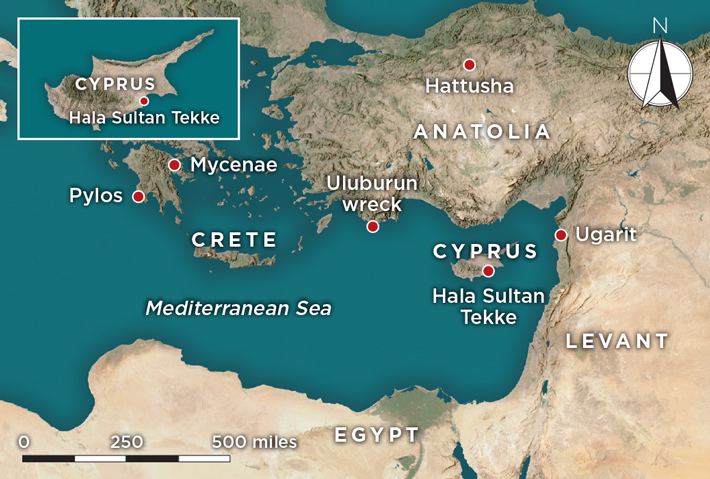
The overwhelming majority of the Uluburun wreck’s cargo, however, consisted of one particularly desirable commodity: copper. The ship was transporting an astounding 10 tons of the invaluable metal, which is one-third the amount of copper it took to create the Statue of Liberty. Since the nineteenth century, archaeologists have categorized time periods in human history by the most advanced material used for tool-making and hence speak of the Stone Age, the Bronze Age, and the Iron Age. Without copper, which can be alloyed with tin to produce bronze, there would have been no Bronze Age. Bronze was a revelation—it is extremely durable and holds an edge better than other materials available at the time. Beginning in the third millennium B.C., and especially during the second millennium B.C., copper was king and could make those who possessed it extremely wealthy and powerful. There was enough copper and tin on board the Uluburun ship to produce 11 tons of bronze, which experts estimate could have been turned into 33,000 swords. Copper, then, could also create armies.
Mediterranean traders had access to multiple sources of copper, but researchers have analyzed the Uluburun wreck’s copper and found that it all came from Cyprus, an island with vast quantities of the raw material. Although there would have been a Bronze Age without Cypriot copper, it is hard to imagine that it would have transpired in the same way. “Without any doubt,” Fischer says, “Cyprus was the main producer of copper during the Late Bronze Age. There is no other area that has such rich copper mines.” Cyprus was also strategically located at the crossroads of the Bronze Age Mediterranean’s greatest cultures, lying 45 miles south of Anatolia, 40 miles west of the Levant, 250 miles north of Egypt, and 340 miles east of Crete. As traders sailed from east to west and north to south, they would inevitably have passed by Cyprus, making it a popular stop for merchants and an ideal emporium.

Recent Swedish excavations at the site of Dromolaxia-Vizatzia on Cyprus’ south coast have provided new insight into a city that specialized in the copper trade during the Late Bronze Age and grew into one of the largest and most prosperous trading hubs in the Eastern Mediterranean. This work has provided evidence of the surprisingly diverse nature of the community thriving there and established how those Cypriots who controlled the production and distribution of copper, such as the shipment found off Uluburun, could become exceptionally rich. “Copper was maybe the most sought-after product of this period,” says Fischer, “and the people of Dromolaxia-Vizatzia produced copper.”
Dromolaxia-Vizatzia lies near the shore of Larnaca Salt Lake. It is better known as Hala Sultan Tekke, which is the name of a mosque and Muslim complex located a few hundred yards to the east that is considered one of the most sacred sites in Islam. During the Bronze Age, Larnaca Salt Lake—which is today blocked off from the Mediterranean—had open access to the sea and provided optimal harbor conditions. The ancient site was first discovered in the nineteenth century, but it is only in recent years that archaeologists have begun to understand what a crucial and vibrant trading center it once was.
For the past 14 years, Fischer has been the director of the New Swedish Cyprus Expedition, also called the Söderberg Expedition, which, in conjunction with the Cyprus Department of Antiquities, has carried out extensive geophysical surveys and excavations of the site. Although the settlement has only been partially excavated, fieldwork indicates that it was founded at least as early as 1630 B.C. and grew significantly between 1500 and 1300 B.C. It eventually spread over at least 60 acres, although based on surface finds that have been collected over an even broader area, Fischer believes it might have been much larger. “We’re sure the site is 60 acres in size, but we haven’t surveyed the entire surroundings,” he says. “It may be up to 120 acres; we don’t know.” That would make Hala Sultan Tekke one of the most extensive Bronze Age sites in the Eastern Mediterranean—and most likely the biggest on Cyprus. “Compared to sites in the Levant, in the Mycenaean cultural sphere, or in Minoan Crete, it’s very large,” Fischer says.
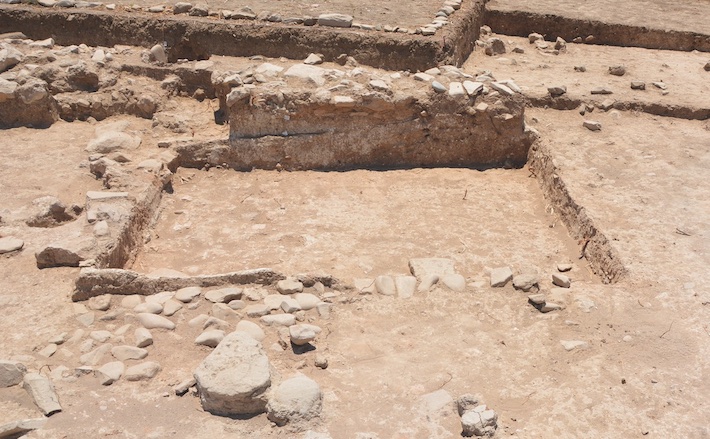
Excavations at the site have revealed a network of buildings and streets likely organized using an orthogonal street plan. While some of the structures were residential, much of the urban space adjacent to the ancient harbor was dedicated to industrial activities, which were the catalyst for the city’s growth and prosperity. One such industry was the production of purple-dyed textiles. For thousands of years, from the Bronze Age through the end of the Roman Empire, purple dye was one of the rarest commodities in the world. It was the color of kings, emperors, and the upper classes. The process of extracting the dye from the mucus gland of the murex sea snail was extraordinarily time consuming, and some experts have estimated that it took as many as 10,000 murex snails to produce a single gram of dye. (See "Letter from Israel: The Price of Purple.") At Hala Sultan Tekke, archaeologists have unearthed workshops containing heaps of crushed murex shells, as well as vats used to dye textiles, including one that still has tinges of purple. Loom weights, spindle whorls, and other evidence indicate that textiles were manufactured on-site. “First you need to produce the purple dye, then the fibers for the textiles, then the textiles themselves, and then you need to dye them,” says Fischer. “It’s quite a long process and very expensive.”
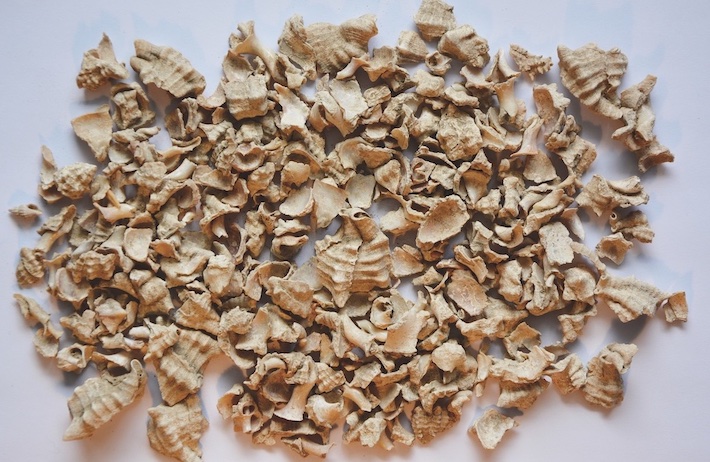
Hala Sultan Tekke’s other major industry and its raison d’être was producing and refining copper. One of the world’s greatest sources of copper was the Troodos Mountains, only 25 miles to the west of Hala Sultan Tekke. The evidence for copper production in the city is ubiquitous––there are remnants of furnaces, molds, crucibles, and tuyeres, a kind of metal tube or nozzle through which air is blown into a furnace. Fischer’s team has collected more than a ton of copper slag and ore, as well as discarded bronze objects that were being prepared for recycling. The city’s inhabitants, then, had access to both copper mines and a protected harbor from which to trade their coveted resource. The only question was, could they keep up with the demand from the ships that landed on their shores?
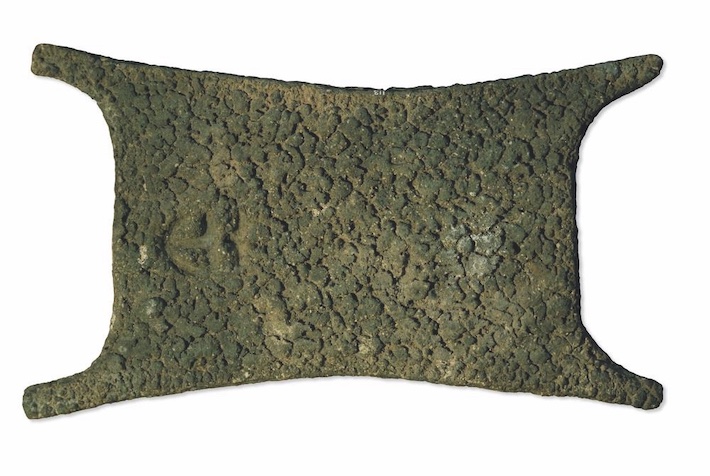
It is difficult to pinpoint exactly when people began to exploit copper, but raw copper has been bent and shaped into decorative ornaments or arrowheads for at least 8,500 years. Copper smelting technology, a process in which raw ore is liquified so that it can be purified and poured into molds, dates to around 4500 B.C. This was followed, around 1,000 years later, by the development of the technology to create bronze. When copper is alloyed with tin, at a ratio of nine parts copper to one part tin, it produces bronze. This much harder and more durable metal enabled people to fashion nearly indestructible bronze tools such as axes, chisels, and swords that were instrumental in agriculture, shipbuilding, and warfare.

The search for particular metals has often led to exploration and, throughout history, civilizations have launched daring expeditions to obtain gold, silver, or other precious materials. The Bronze Age was the first great age of sailing, partially due to improved boatbuilding technology—thanks to the advent of bronze tools. Exploration was also fueled by the desire to obtain the copper needed to make more bronze. These circumstances made the island of Cyprus one of the most vital places in the Mediterranean during the Late Bronze Age and beyond. For more than 2,000 years, until the fall of the Roman Empire, Cyprus was the most important producer of copper in the Mediterranean. Cyprus was so synonymous with the metal that the English word “copper” is derived from word cuprum and the phrase aes cyprium, meaning “metal of Cyprus.”
The earliest written reference to Cypriot copper is found on an eighteenth-century B.C. cuneiform tablet from the city-state of Mari in modern Syria that mentions a copper mountain in Alashiya, the Akkadian name for Cyprus. Proof of Cyprus’ near-total dominance of large-scale copper trading during the Late Bronze Age can be found in the Amarna Letters, a collection of fourteenth-century B.C. correspondence between the Egyptian pharaohs Amenhotep III (reigned ca. 1390–1352 B.C.) and Akhenaten (reigned ca. 1349–1336 B.C.) and foreign powers such as the Hittites and Babylonians. There are eight letters between Egypt and an unknown king of Cyprus, five of which mention shipments of copper from the island to Egypt. Each shipment would have totaled thousands of pounds, similar to the cargo of the Uluburun ship. Kings and leaders from around the Mediterranean sent their ships to Cyprus, many of which would have arrived at Hala Sultan Tekke.
Hala Sultan Tekke had an ideal harbor, ready access to copper ore, and, excavations have shown, artisans capable of producing large quantities of refined copper. Until recently, however, not much was known about the people who controlled this industry. Rather than being ruled by a single monarch, Fischer believes that the city was likely run by a cadre of powerful families who managed the economy and reaped the benefits of the lucrative copper trade. Over the past few years, evidence of these commercial titans and their riches has been found on the outskirts of the city where geophysical survey detected hundreds of circular anomalies. Follow-up investigation revealed that many of these features are graves. The location of this necropolis, which appears to be outside the city walls, was unexpected. “The deceased were typically buried inside the settlement, usually in courtyards or beneath the floors of houses,” says Fischer. “But in Hala Sultan Tekke, we have a separated cemetery, which is something unique and extraordinary in Late Bronze Age Cyprus.” Even more extraordinary are the objects these tombs contained.
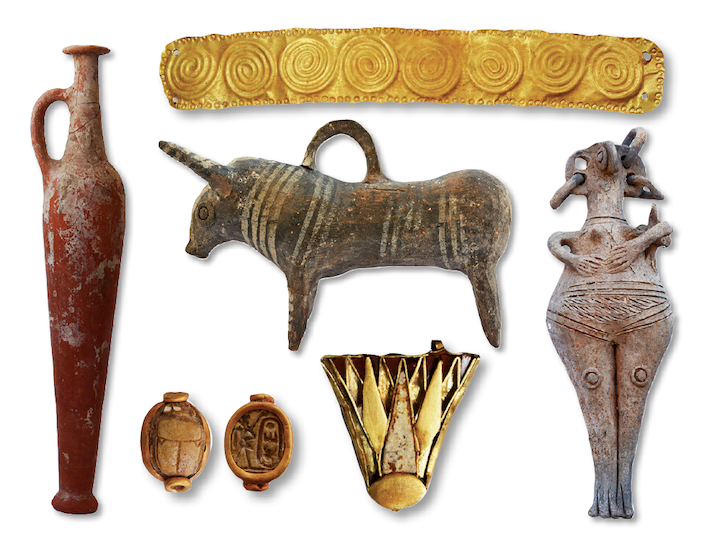
The burials were the final resting places of Hala Sultan Tekke’s elite, who were interred in well-built and elaborately furnished chamber tombs that were used by families for generations. They contained thousands of grave goods, many of them intact, that attest to the wealth that the city’s rulers amassed during the height of the Bronze Age trade in the fourteenth and thirteenth centuries B.C. These burials are among the richest ever discovered in the Eastern Mediterranean. And much like the cargo of the Uluburun wreck, they include a broad spectrum of foreign goods. “What’s most impressive to me is the multicultural nature of the objects,” Fischer says. “It’s fascinating.”
As ships sailed to Cyprus seeking copper, they brought with them exotic luxury objects from their homelands and others they picked up along the way. Archaeologists have unearthed hundreds of imported ceramic vessels from the Mycenaean and Minoan worlds, as well as pottery from Anatolia, the Levant, Sardinia, and Egypt. There are semiprecious gems and stones, including lapis lazuli from Afghanistan, carnelian from India, and amber from the Baltic. Other objects include cylinder seals from Mesopotamia, silver pendants from Anatolia, turquoise from the Sinai Peninsula, and elephant and hippopotamus ivory objects from Egypt. Perhaps most impressive is an assortment of Egyptian gold jewelry.
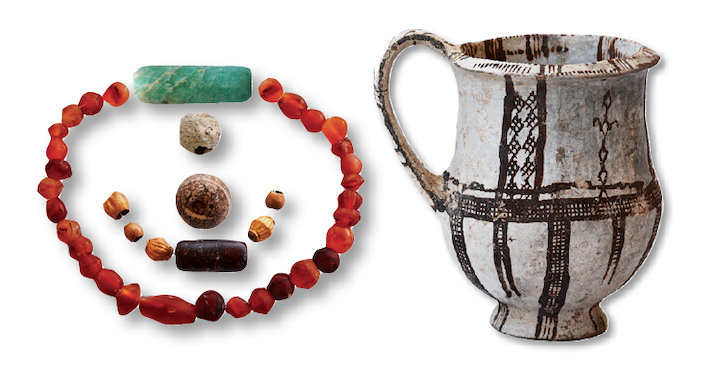
High-quality artifacts such as those found at Hala Sultan Tekke tend to garner the lion’s share of attention, but one of the Swedish expedition's main goals is to look beyond these flashy items to learn more about the inhabitants of this particular Cypriot trading center. “My primary aim for the last years of this project is to look at not only what these people produced, but at the people themselves,” Fischer says. “Are they local? Are they immigrants? ”It turns out they are a mixture of both. Over the past few years, the team has conducted DNA testing and strontium isotope analysis of some individuals buried in Hala Sultan Tekke’s graves to investigate their genetic backgrounds as well as where they grew up. The majority of those studied belong to a genetic group that includes Anatolians, Levantines, and Cypriots, as was expected. However, there were also individuals who hailed from the Mycenaean world and even a woman, likely the wife of a copper magnate, who was originally from Italy.
There is other evidence that some foreigners migrated to Hala Sultan Tekke. Excavations within the city have uncovered examples of Sardinian black-burnished pottery along with Sardinian-style tools, which Fischer believes were brought to the island by immigrants. He does not imagine such objects, which are fairly low value, would have been imported over such a great distance, particularly since Hala Sultan Tekke’s inhabitants had access to much higher quality products. “Why would the Cypriots import these pedestrian earthenware vessels when they had beautiful local Cypriot wares, as well as Mycenaean and Minoan pottery?” he asks. “I believe that there were Sardinians living in Cyprus.” Hala Sultan Tekke’s immigrant population may also explain why the cemetery was located outside the city walls, which is a more common practice elsewhere in the Mediterranean. “Hala Sultan Tekke is a harbor site, and harbor sites have connections with other cultures,” Fischer says. “Of course their population is a more mixed population. There were connections and people moved. We believe we travel a lot today, but these people did, too.”
The prosperity that Hala Sultan Tekke enjoyed, as well as the success of many other major settlements and cultures of the Late Bronze Age, came to a crashing halt in the twelfth century B.C. when city-states and kingdoms across the Eastern Mediterranean suddenly declined sharply. Among these were Mycenae and Pylos in Greece, Hattusha in Anatolia, and Ugarit in the northern Levant. Eventually, the powerful Hittite Empire disintegrated, while even mighty Egypt lost territory and suffered economic setbacks. Perhaps most significantly, the prosperous cross-cultural trade that had come to epitomize the Late Bronze Age all but ceased to exist. Hala Sultan Tekke was destroyed twice during this period: first around 1200 B.C., and again around 1175 B.C. The city’s inhabitants initially tried to rebuild, but after the second sack, they abandoned the site, never to return.
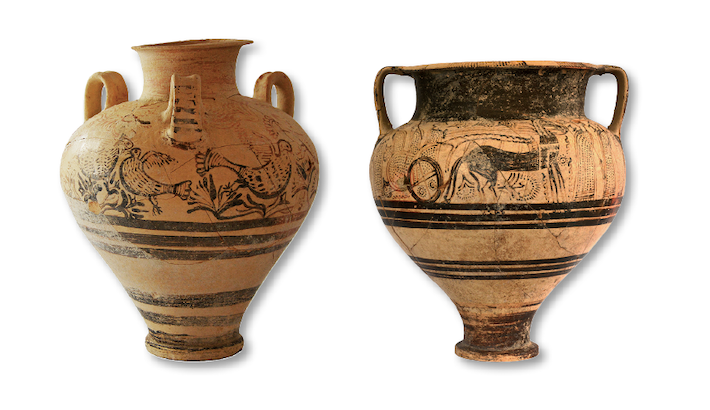
There is little consensus among scholars as to what exactly brought about this catastrophic collapse. Since the nineteenth century, many have blamed a mysterious group of marauders known as the Sea Peoples. Some historians and archaeologists have posited that this group, perhaps originating in Italy, Southern Europe, or the Balkans, suddenly migrated into the Eastern Mediterranean en masse and created havoc by ransacking coastal communities and crippling established political and economic systems. The question of whether the Sea Peoples actually existed remains controversial, although there is some archaeological evidence that they did. For example, the Egyptian pharaoh Ramesses III (reigned ca. 1184–1153 B.C.) is said to have fought against and defeated the Sea Peoples in two battles, one on land and the other at sea, which are commemorated on a relief in his temple at Medinet Habu.
Most scholars agree that the reasons for the Bronze Age collapse are nuanced and complex, the result of several devastating events, including a series of calamitous earthquakes, that occurred around the same time. There were movements of people and invasions around the Eastern Mediterranean that disrupted trade and the status quo, but they may have been more a symptom than the cause of the collapse. “The Sea Peoples are a phenomenon,” says Fischer. “There were people involved, but at the same time, in the twelfth century B.C., we have indisputable sources talking about epidemics, pestilence, famine, and a worsening climate.”
As for Hala Sultan Tekke, the city was clearly ravaged, likely by outsiders. “I’m quite convinced the site was attacked,” Fischer says. “It could have been from an angry neighbor, but I tend to blame invading foreigners.” These incursions, along with the silting up of the harbor, which may have happened around the same time, were insurmountable obstacles to its continued success. Hala Sultan Tekke was no longer able to maintain its role as a major trading port, ending a nearly 500-year period of prosperity. According to Fischer, some of the city’s population may have followed the mysterious group of marauders southeast, toward Egypt, and then settled in the southern Levant. With the dismantling of trade routes and the loss of copper trading ports such as Hala Sultan Tekke, the Bronze Age drew to a close. Ships like the one that wrecked off Uluburun disappeared for centuries. After the events of the twelfth century B.C., it became more difficult to obtain copper, as well as tin, from distant lands. However, people would soon develop a new metallurgic technology that was even stronger and more formidable than bronze. This new technology would quickly spread around the world and would soon usher in a new age, the age of iron.


